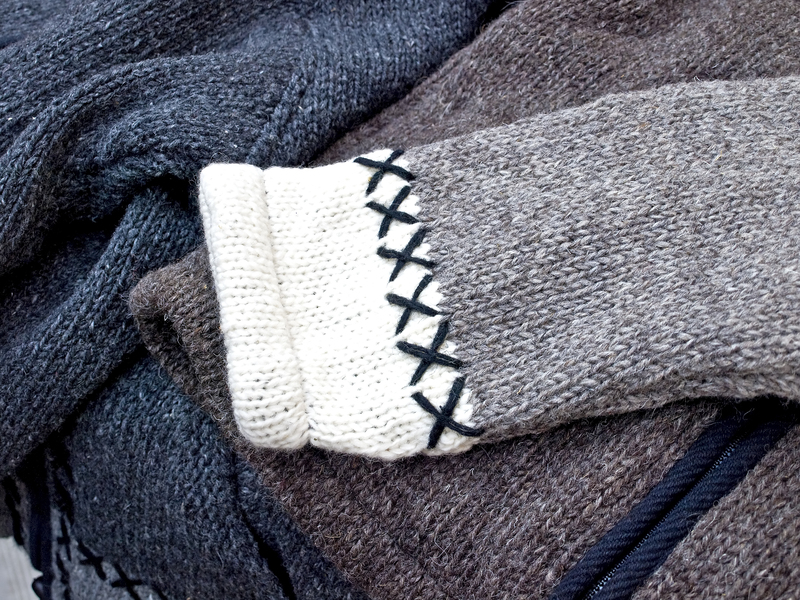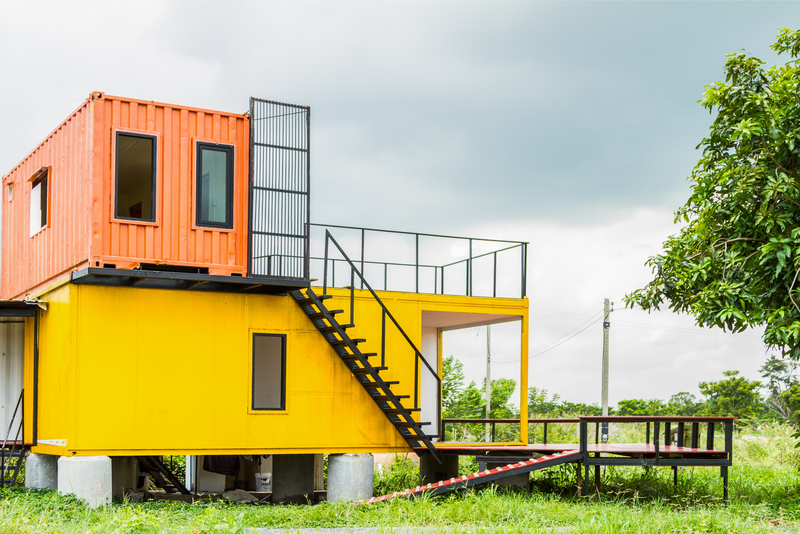Turning Used Pots and Pans into Sustainable Materials: A Comprehensive Guide
Every kitchen has its share of battered pots and pans, relics of countless meals and family gatherings. But what happens to these culinary essentials when they've outlived their usefulness? While many end up in landfills, an increasing number of eco-conscious individuals and companies are realizing the importance of turning used pots and pans into sustainable materials. This innovative approach not only reduces waste but also paves the way for a greener, more circular economy.

Why Focus on Repurposing Old Cookware?
Cooking vessels are typically made from highly durable metals like aluminum, stainless steel, or copper. When these items are discarded improperly, they contribute to growing landfill populations and environmental degradation. Transforming these materials into new, sustainable goods provides numerous benefits:
- Reduces landfill waste
- Conserves natural resources by reusing metals
- Decreases the energy and pollution associated with mining and refining new materials
- Inspires creative upcycling and circular manufacturing
- Encourages sustainable living habits
Understanding the Life Cycle of Cookware
The journey of a pot or pan typically begins at the extraction of raw materials and ends at disposal. However, it does not have to stop there. The sustainable materials revolution seeks to extend the lifespan of these items far beyond a single use cycle.
Common Materials in Pots and Pans
- Stainless Steel: Highly resistant to rust and corrosion, making it a valuable recyclable metal.
- Aluminum: Lightweight and easy to repurpose; recycling aluminum saves up to 95% of the energy required to make it from scratch.
- Copper: Increasingly rare and expensive, but can be easily melted down and reused.
- Cast Iron: Durable and often revived with seasoning for continued use or melted into new forms.
Methods for Turning Used Pots and Pans into Sustainable Materials
There are several innovative ways to reuse and recycle cookware, from industrial recycling methods to creative DIY solutions. Here's how individuals and businesses alike can turn used pots and pans into eco-friendly materials and products:
1. Community Recycling Programs
Many communities offer recycling centers that accept metal goods, including old cookware. Simply dropping off your used pots and pans at these facilities ensures that they are sorted, melted down, and reformed into new metal products.
2. Manufacturer Take-Back Schemes
Some cookware brands now run take-back programs, allowing customers to send in old items in exchange for discounts or eco-friendly new pots and pans. These used goods are processed at the company's facility, closing the materials loop and reducing waste.
3. Upcycling at Home
Turning used pots and pans into sustainable materials can begin at home with a little creativity. Consider these ideas:
- Transform skillets or pans into planters for herbs and flowers
- Turn old lids into wall art or clocks
- Repurpose saucepans as storage containers or organizers
- Use metal components in crafts or DIY furniture projects
4. Artisan and Community Projects
Local artists and makers often seek out scrap metal or unique cookware pieces for sculpture, garden decor, or functional art. Contributing your used pots and pans to such projects stimulates the local economy and supports the arts.
The Industrial Path: Large-Scale Recycling Efforts
Large recycling plants are equipped to handle the efficient processing of various metals, turning used cookware into sustainable raw materials:
- Sorting and Cleaning: Recyclable pots and pans are sorted by type and cleaned of any debris or handles.
- Shredding and Melting: The metal is then shredded and melted in large furnaces, removing impurities and mixing similar alloys together.
- Recasting: The pure, molten metal is poured into molds to create new sheets, pipes, or bars that serve as base materials for countless new products.
- Reintegration into Manufacturing: These newly formed materials enter the manufacturing chain, eventually becoming new items--perhaps even a brand new pan!
Environmental Benefits
There are significant environmental benefits to reprocessing old pots and pans:
- Energy Conservation: Using recycled aluminum and steel consumes far less energy compared to mining and refining virgin metals.
- Decreased Greenhouse Gases: Recycling cuts down on the carbon footprint associated with the extraction and production stages.
- Reduction in Landfill Volume: Fewer discarded items mean less strain on landfills and reduced pollution.
Creative Upcycling: Beyond Basic Recycling
While recycling provides tremendous ecological value, creative upcycling breathes new life into cookware and inspires innovative ways to reduce our environmental impact.
DIY Ideas for Repurposing Cookware
- Garden Decor: Turn old colanders and pots into whimsical flower planters or bird baths.
- Organizers: Use small pots to store craft supplies, utensils, or tools in your garage or workshop.
- Art Projects: Create sculptures, wind chimes, or even lampshades from vintage pans and lids.
- Furniture Accents: Integrate large pans or pot lids as tabletops or seat bases for homemade furniture.
Case Studies: Upcycling in Action
Various organizations and individuals have made headlines by transforming discarded cookware into incredible works of art or functional pieces. For example, artists have crafted large-scale sculptures from welded pots and pans, while eco-conscious businesses use repurposed cookware in store displays. These efforts showcase how turning used pots and pans into sustainable materials fosters a culture of creativity and responsibility.
The Role of Manufacturers in Sustainable Cookware Recycling
Cookware manufacturers play a pivotal role in the sustainable cycle by designing products that can be easily recycled or upcycled. Here are some ways companies are embracing sustainability:
- Eco-Conscious Design: Reducing the use of mixed materials that complicate recycling, such as plastic handles and non-stick coatings.
- Take-Back Initiatives: Offering programs that incentivize customers to return old or broken cookware.
- Transparency: Educating consumers about how to responsibly dispose of or repurpose their cookware.
- Use of Recycled Materials: Manufacturing new pots and pans from recycled metals, further closing the material loop.
Leading Brands Making a Difference
Several reputable brands have stepped up to support the movement:
- Brands using 100% recycled aluminum in their cookware lines.
- Companies offering mail-back services for old pans, ensuring responsible recycling.
- Partnerships with organizations that repurpose discarded cookware into educational or social programs.
How Consumers Can Get Involved
Changing the fate of used pots and pans starts at home. Consumers hold the power to drive sustainability efforts by making conscious choices:
- Donate usable cookware to thrift stores or charitable organizations.
- Research local recycling centers that accept metal cookware.
- Support brands committed to sustainable practices and recycled materials.
- Try upcycling projects or offer old pots to artists and makers.
- Host a community swap or recycling drive for battered cookware.
Tips for Proper Cookware Recycling
- Remove non-metal parts (like plastic handles or glass lids) before recycling, as mixed materials can disrupt the process.
- Clean thoroughly to reduce contaminants at the recycling facility.
- Be aware that coated pans (such as Teflon or ceramic) may require specialized recycling due to their chemical coatings.
- Consult local recycling authorities to ensure compliance with area-specific rules and regulations.
Frequently Asked Questions About Turning Pots and Pans into Sustainable Materials
Can all types of cookware be recycled?
Most metal cookware, including stainless steel, aluminum, and copper, is highly recyclable. However, non-stick coatings or composite materials may complicate the process and require specialized recycling. Always check with your local facility.
Are there environmental risks to recycling cookware?
When done correctly, recycling metal cookware presents minimal risks and offers numerous ecological benefits. Problems can arise if hazardous coatings or materials aren't removed beforehand, potentially contaminating recycled metals.
What's the difference between upcycling and recycling cookware?
Recycling involves breaking the product down into raw materials, while upcycling preserves the form and function of the item, repurposing it in creative ways.

The Road Ahead: The Future of Sustainable Cookware Materials
As awareness grows, the movement to transform used pots and pans into sustainable materials is gathering momentum. With more manufacturers, consumers, and communities participating, innovation in materials and recycling processes is accelerating.
Emerging Trends
- Smart sorting technology that accurately separates different metals for more efficient recycling.
- Development of coatings and handles that are biodegradable or easily removable.
- Greater integration of post-consumer recycled metals in major cookware brands.
- Expansion of creative upcycling communities and workshops teaching people how to give new life to old pans.
Conclusion: Everyone's Contribution Matters
Turning used pots and pans into sustainable materials is a vital way to reduce waste, save energy, and support a more eco-friendly lifestyle. Whether you recycle through official channels, participate in manufacturer initiatives, or embrace creative upcycling, each action contributes to a healthier planet.
Begin by examining your kitchen cabinets: that worn-out saucepan or forgotten frying pan could be the first step on a path to sustainability. With growing awareness, innovation, and community support, the circle of turning used pots and pans into sustainable materials will only widen--helping shape a greener, more responsible future for all.
